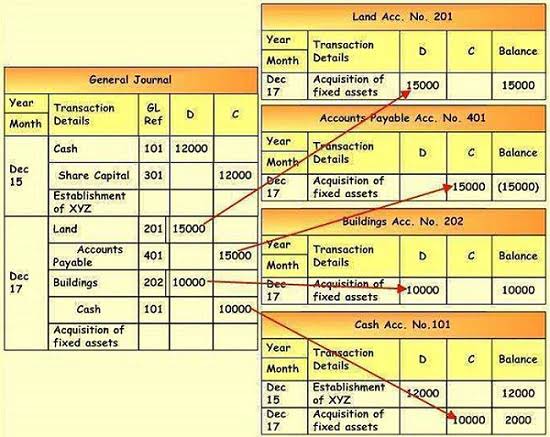Bookkeeping
How to Prepare a Bank Reconciliation: 8 Steps with Pictures

When you compare the balance of your cash book with the balance showcased by your bank passbook, there is often a difference. One of the primary reasons this happens is due to which of the following is not a step in preparing a bank reconciliation? the time delay in recording the transactions of either payments or receipts. This way, the number of items that can cause the difference between the passbook and the cash book balance is reduced. And as a result, it gets easier to ascertain the correct balance in the balance sheet.
- The bank statement is reconciled when the adjusted cash balance as per bank equals the adjusted cash balance as per company books.
- At times, you might give standing instructions to your bank to make payments regularly on specific days to third parties, such as insurance premiums, telephone bills, rent, sales taxes, etc.
- The statement itemizes the cash and other deposits made into the checking account of the business, as well as any expenses paid by the business.
- If you’re not careful, your business checking account could be subject to overdraft fees.
- Add back any receipts for deposits in transit from a company to the bank, which have been paid in but not yet processed by the bank.
Bank reconciliations are a must

Because your bank account gets integrated with your online accounting software, all your bank transactions will get updated automatically and each item will be matched with your books of accounts. While reconciling your books of accounts with the bank statements at the end of the accounting period, you might observe certain differences between bank statements and ledger accounts. If this occurs, https://www.instagram.com/bookstime_inc you simply need to make a note indicating the reasons for the discrepancy between your bank statement and cash book. A company, ABC Co., receives a bank statement from one of its banks stating the balance in the bank account to be $2,650.

Match deposits and withdrawals to the balance sheet
If you want to prepare a bank reconciliation statement using either of these approaches, you can use the balance as per the cash book or balance as per the passbook as your starting point. These fees are charged to your account directly, and reduce the reflected bank balance in your bank statement. These charges won’t be recorded by your business until your bank provides you with the bank statement at the end of every month. More importantly, bank reconciliation can play a crucial role in catching any fraudulent activity. For example, employees may exploit loopholes in the internal control of a company to their advantage. Therefore, bank reconciliation is the best option that companies have of detecting or sometimes detecting the error before it’s too late.

Achieve Financial Accuracy With Free Bank Reconciliation Template
These charges may come in the form of bank charges, interest charges, or taxes levied by the government. Since the company does not receive the bank statement until the end of the month, it cannot predict these charges or record them. Unrecorded differences are amounts that are present in the bank statement but not present in the bank book are known as unrecorded differences. Theoretically, the transactions listed on a business’ bank statement should be identical to those that appear in the accounting records of the business, with matching ending cash balances on any given day. In the same month, the company wrote a $5,000 check and deposited $2,000 at the end of the day on March 31.
- Financial accuracy is also important for ensuring that all payments have been fulfilled and orders have been completed.
- You’ll also want to look at any miscellaneous deposits that haven’t been accounted for.
- Today, online banking and accounting software offer real-time feeds and automated transaction matching.
- But this is not the case as the bank does not clear an NFS check, and as a result, the cash on hand balance gets reduced.
- However, small business owners and bookkeepers need to remember that yes, banks do make mistakes, and one of the best ways to find those mistakes is by reconciling all of your bank accounts monthly.
Example of Bank Reconciliation Statement

Bank reconciliation plays a crucial role in the internal control process of a company and helps in detecting fraud and error in the process. When preparing a bank reconciliation, the company must look for two types of differences, timing and unrecorded differences. These are categories of discrepancies that cause a difference in the balances between the balances in the bank book and bank statement. After recording the journal entries for the company’s book adjustments, a bank reconciliation statement should be produced to reflect all the changes to cash balances for each month. This statement is used by auditors to perform the company’s year-end auditing. Once you’ve identified all the items that align between the two records, it’s time to account for any discrepancies.

- Bank statements also show expenses that may not have been included in financial statements, such as bank fees for account services.
- Compare the balance sheet’s ending balance with the bank statement’s ending balance.
- Adjust the cash balances in the business account by adding interest or deducting monthly charges and overdraft fees.
- Regular reconciliation and review of financial records can help identify and resolve errors promptly, reducing the risk of financial issues.
- Interest is automatically deposited into a bank account after a certain period of time.
Companies perform bank reconciliation at regular intervals, usually at the end of each month. It is also recommended that they should carry out a bank reconciliation should at least every month https://www.bookstime.com/articles/accounting-for-amazon-sellers-amazon-bookkeeping if not any sooner. Today, online banking and accounting software offer real-time feeds and automated transaction matching.
